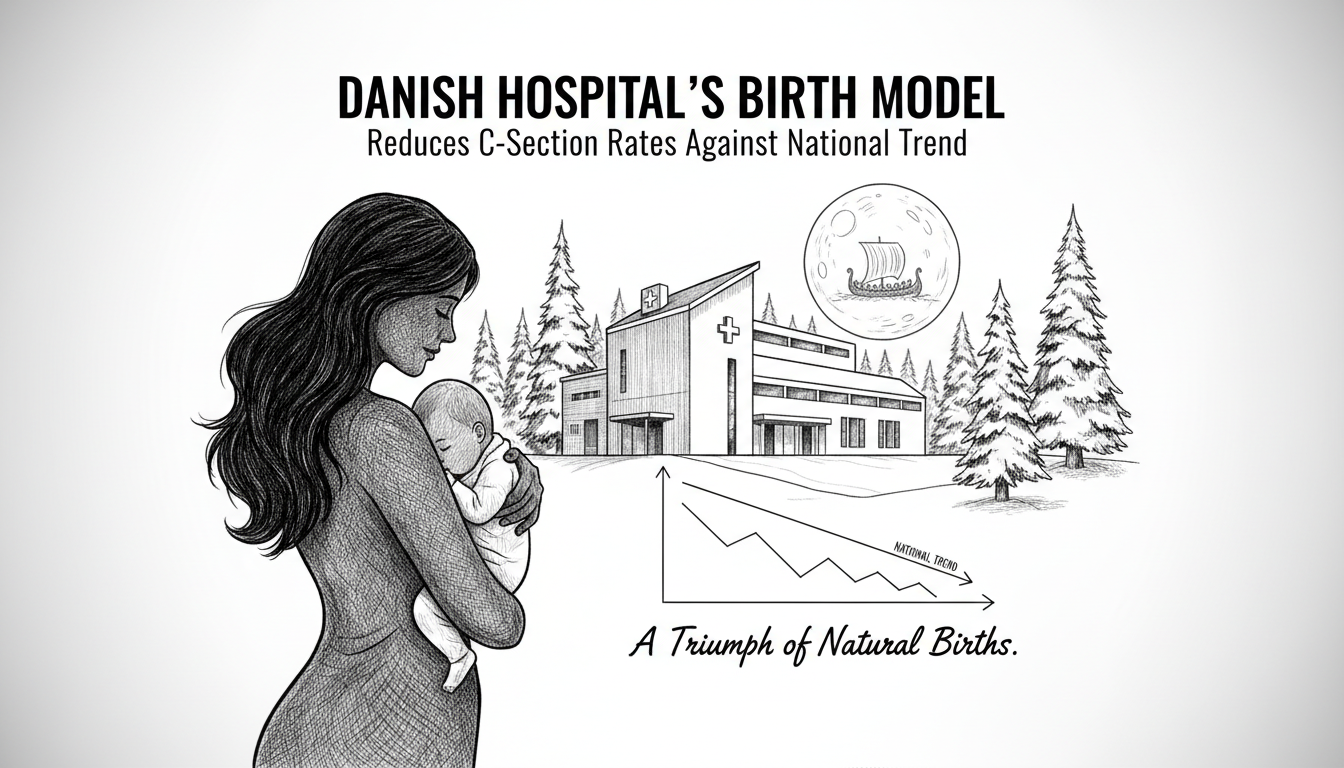A Danish hospital's innovative approach to childbirth has dramatically reduced cesarean sections while maintaining safety for mothers and babies. The model developed at Sønderjylland Hospital offers new hope for women facing complicated deliveries.
Luise Erichsen arrived at Sønderjylland Hospital with her husband to deliver their first child. She knew the birth could become complicated because her daughter was in breech position. Statistics show eight out of ten such births typically end in emergency C-sections.
"I had read that it often ends with a C-section," Erichsen recalled. "But I wanted to deliver naturally. That was my dream."
Instead of scheduling surgery, the midwives prepared her thoroughly for how the birth could proceed. They created a detailed plan and provided constant support. The birth began at night, and by 10:00 the next morning, daughter Ane was born safely, breech-first, without pain medication.
This successful breech birth represents the success of what has become known as the 'Aabenraa model.' The hospital initiated a comprehensive cultural shift in childbirth around 2008, deciding to actively reduce cesarean sections.
The results have been remarkable. At Sønderjylland Hospital, only 14.5 percent of births involved C-sections recently. This ranks among the country's lowest rates and has remained consistently low for 15 years. Meanwhile, the national average sits around 21 percent and has been increasing since 2018.
The most dramatic change occurred between 2008 and 2018, when Sønderjylland Hospital's C-section rate dropped from 21.1 percent to 12.1 percent. Other comparable hospitals showed minimal reduction during the same period.
Chief Midwife Trine Andersen at Sønderjylland Hospital believes the Aabenraa model works because of its careful approach. "We try hard to provide the best conditions for normal birth," Andersen explained. "We only intervene in the birth process when we're sure it's better than not intervening. We constantly find balance and avoid overtreatment. This requires a strong interdisciplinary team."
Research confirms the model's effectiveness. Researcher Eva Rydahl documented in a new study that the Aabenraa model significantly reduced C-sections without negative consequences for mother or child. "Sønderjylland Hospital is a unique example of how culture and professionalism can change practice," Rydahl stated.
The research team followed the hospital for nine years, comparing it with similar hospitals in Holbæk and Hjørring. While Sønderjylland achieved dramatic reductions, control hospitals showed only minimal annual decreases.
The World Health Organization considers 10-15 percent C-sections optimal for a healthy population. Sønderjylland's current rate aligns perfectly with this recommendation.
The model's success stems from several key elements: daily reflection meetings, joint training of midwives and doctors, systematic data use, focus on learning, and psychological safety. This comprehensive approach has created an environment where natural birth receives proper support while maintaining safety standards.
For Luise Erichsen, now working as an office trainee at Danfoss, the experience confirmed her faith in her body's capabilities. "I'm grateful they took the time," she said. "Many places make C-sections seem easiest. But here I got to try. That means everything to me."
She later delivered her second child at the same hospital. This time, daughter Hilde was positioned head-down, the most common birth position. Both experiences reinforced her confidence in the hospital's approach to childbirth.
The Danish case demonstrates that with proper protocols and interdisciplinary cooperation, hospitals can safely reduce medical interventions during childbirth. This has implications for healthcare systems worldwide facing rising C-section rates.

